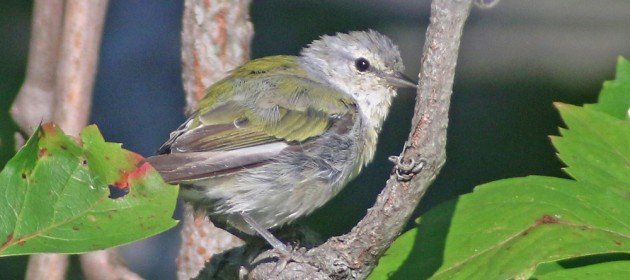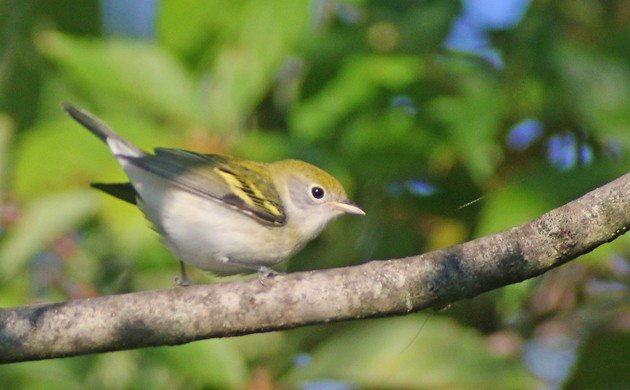
I was upstate again this past weekend, collecting Desi from his week with his grandparents, and took a couple of hours early Sunday morning to visit my favorite Saugerties birding spot, the Great Vly. As is to be expected in late August there were many young birds around getting the hang of living life on their own. Green Herons, Eastern Kingbirds, Tree Swallows, Cedar Waxwings, and a host of other species were successful in breeding and there were a lot of birds around. But what really drew my attention was a particular patch of trees that had quite a few small passerines foraging.

There were Tufted Titmice and Black-capped Chickadees, White-breasted Nuthatches and American Redstart. The birds were busy, intent on finding their forage, so they paid little attention to the giant biped with his tripod.
Then I caught a quick glimpse of a small bird, very white below, that didn’t look quite like the Warbling Vireos that were also occupying the space. I’m not sure what keyed me in to this bird, but something seemed different. I tried to get another look at it but it seemed to have disappeared further back into another tree. Oh well. The Warbling Vireos were still around and I enjoyed watching a fledgling begging and its parent ignoring it.
